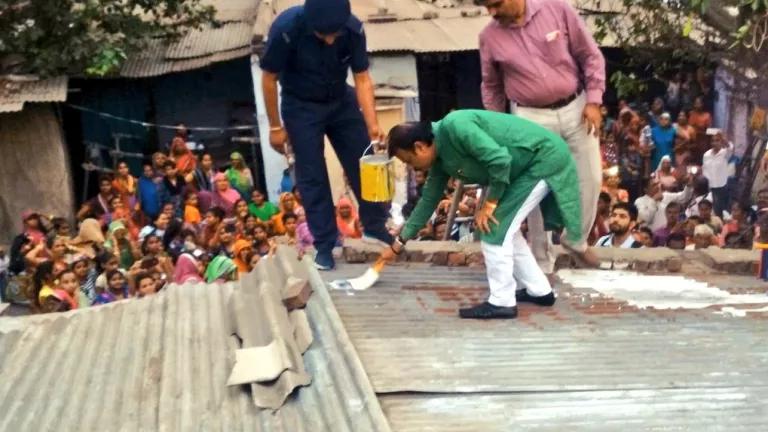In India, Climate Action Is Saving Lives

Earlier this summer, nearly 500 Kerala residents tragically lost their lives in severe monsoon floods. It was the worst flooding the state had experienced in nearly a century, and adds to a growing list of extreme rainfall events that different parts of India have experience in recent years. Heavy rainfall, worsening floods and extreme heat are impacts of climate change that endanger the lives of people across India.
With a population of approximately 1.3 billion people and annual economic growth averaging 6 to 7 percent, India is now the world’s third-largest consumer of energy and emitter of greenhouse gasses (GHGs). Yet, India is committed to prioritizing clean energy to fuel its fast-growing economy.
Under the Paris Agreement, India pledged to cut GHG emissions intensity by 30 to 35 percent from 2005 levels by 2030. Within the same timeframe, India intends to begin generating 40 percent of its power capacity from non-fossil fuel sources. By 2022, the country is aiming to achieve 100 gigawatts (GW) of solar energy capacity along with 60 GW of wind power.
For nearly a decade, NRDC’s climate experts have been partnering with leading groups in India. With civil society partners and business leaders, we are collaborating with national, state and local governments to formulate policy solutions and to implement energy efficiency. Together, we are striving to combat climate change impacts while increasing energy access for the more than 200 million residents who lack reliable electricity. Our focus areas are renewable power generation, green job creation, efficient cooling and transport systems, and healthier air and communities.
Each year, extreme heat contributes to the premature deaths of hundreds, and often thousands, of people in India. When Ahmedabad reached temperatures of 46.8°C (more than 116°F) during a catastrophic 2010 heat wave, authorities were spurred into action. In 2013, NRDC and partners helped city, state and national agencies develop a Heat Action Plan for the city, which has become a model for others to follow. At least 30 cities and 11 states have since adopted their own Heat Action Plans.
Many of those most vulnerable to heat are very low income and live in highly populated urban areas. In the cities of Hyderabad and Ahmedabad, NRDC and partners have piloted successful cool roof projects. Using low-cost materials to reflect sunlight and thermal radiation from rooftops, it is possible to decrease inside temperatures by 2-5°C (3.6-9°F).
To reduce the amount of energy used by large buildings, the states of Telangana and Andhra Pradesh adopted comprehensive building codes in 2014. If those energy efficiency codes and compliance processes were to be adopted nationwide, India could save $42 billion per year. That’s not the only economic benefit of green development. Expanding renewable generation to reach the target of 100 GW of solar energy by 2022 could create jobs for more than 300,000 workers during next five years.
To achieve India’s ambitions for energy efficiency, renewable energy production, and climate resilience, it will be critical to catalyze substantial financing. Estimates are that more than $100 billion in investments will be necessary to realize India’s clean energy goals. Funding for distributed renewable energy generation, such as rooftop solar, is particularly pressing.
Next week, more than a dozen city and state leaders from India will participate in the 2018 Global Climate Action Summit. The event is an opportunity to share experiences, deepen existing relationships, and forge new partnerships. It is our hope that those attending the High-Level Forum on India Climate Actions, co-hosted by NRDC, will be inspired by India’s tremendous progress toward 2030. In cities across the country, energy efficiency and climate resilience are having positive impacts on individuals’ lives today.
